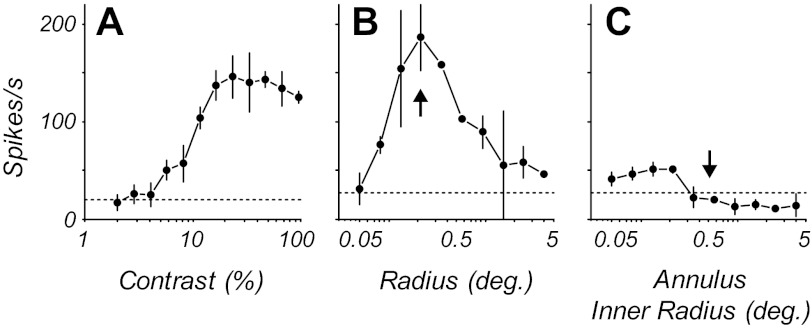Fig. 1.
Contrast response, area summation, and annulus tuning for an example complex cell. A: contrast-response function for a stimulus confined to the classical receptive field (CRF). B: area-response function with a stimulus of preferred spatiotemporal frequency and direction of drift. The size of the stimulus in the CRF was chosen to be the smallest size evoking the optimal response (vertical arrow). C: response as a function of the size of an annular region of optimal grating. The central mean gray area of the stimulus expands as the inner radius of surround grating increases. The stimulus at zero inner radius is equivalent to the largest radius in B. As the inner radius increases, the response decreases until there is no response from the CRF (vertical arrow). This is the inner radius chosen for the extraclassical receptive field (eCRF) context experiments. All points are means ± SD.

